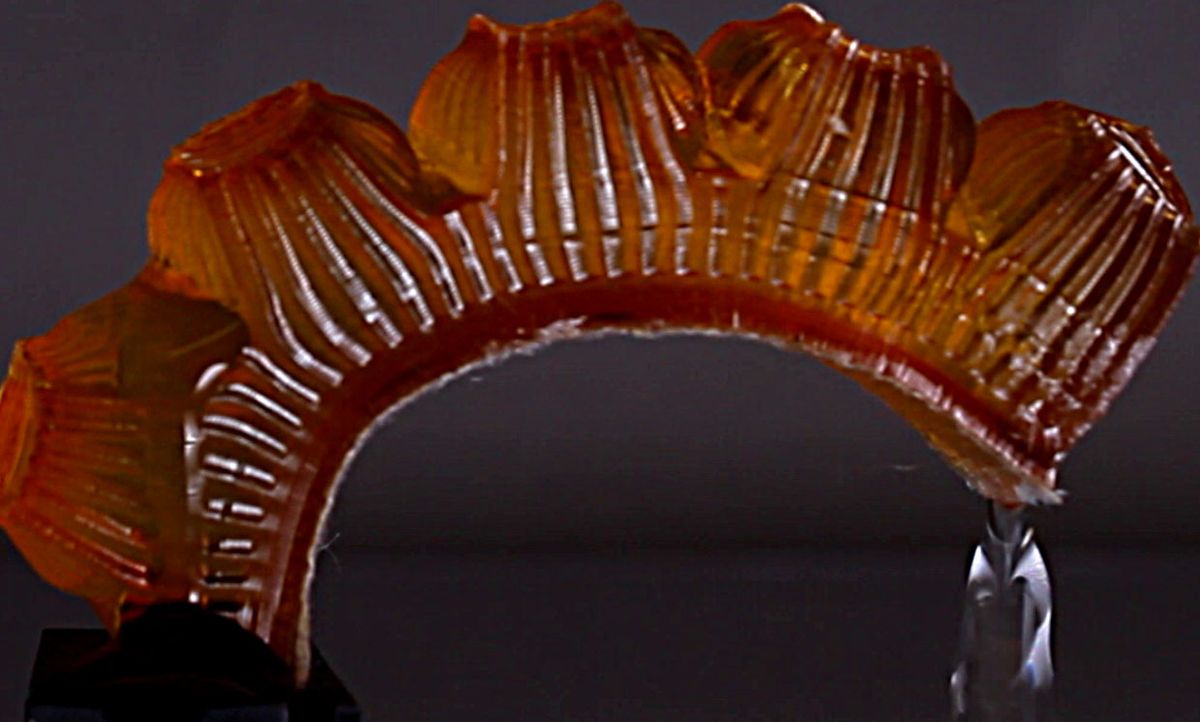When the going gets tough, future soft robots may break into a sweat to keep from overheating, much like marathon runners or ancient hunters chasing prey in the savannah, a new study finds.
Whereas conventional robots are made of rigid parts vulnerable to bumps, scrapes, twists, and falls, soft robots inspired by starfish, worms, and octopuses can resist many such kinds of damage and squirm past obstacles. Soft robots are also often cheaper and simpler to make, comparatively lightweight, and safer for people to be around.
However, the rubbery materials that make up soft robots often trap heat, exacerbating problems caused by overheating. Moreover, conventional devices used to control heat such as radiators and fans are typically made of rigid materials that are incompatible with soft robotics, says T.J. Wallin, a co-author and research scientist at Facebook Reality Labs.
To solve this problem, scientists decided to build robots that could sweat. "It turns out that the ability to perspire is one of the most remarkable features of humans," Wallin says. "We're not the fastest animals, but early humans found success as persistence hunters—the combination of sweating, relative hairlessness, and upright bipedal gait enabled us to physically exhaust our prey over prolonged chases."
"An elite marathon runner in the right conditions has been known to lose almost four liters of sweat an hour—this corresponds to roughly 2.5 kilowatts of cooling capacity," Wallin says. "To put that in perspective, refrigerators only use approximately 1 kilowatt-hour of energy. So as is often the case, biology provided an excellent guide for us engineers."
The researchers 3D-printed soft robot fingers that were hollow like balloons. These could bend or straighten to grip or drop objects, depending on the level of water pressure within each finger.
The robot fingers were each made of two different kinds of soft, flexible resin. The body of each finger was made of a resin that shrunk when heated above 40 degrees C, whereas the back of each finger was capped with a resin that expanded when heated above 30 degrees C.
The back of each finger was also dotted with microscopic pores. At temperatures cooler than 30 degrees C, these pores remained closed. However, at higher temperatures, the material on the back of each finger expanded, dilating the pores and letting the water in each finger sweat out. Moreover, as the heat rose, the material that made up the body of each finger shrank, helping squeeze out water.
"The best part of this synthetic strategy is that the thermoregulatory performance is baked into the material itself. We did not need to add sensors or other components to control the sweating rate—when the local temperature rose above the transition point, the pores would simply open and close on their own," Wallin says.
When exposed to wind from a fan, the sweaty fingers cooled off by about 39 degrees C per minute, or roughly six times faster than their dry counterparts. The amount by which the sweaty fingers cooled (about 107 watts per kilogram) also greatly exceeded the best cooling performance seen in animals (about 35 watts per kilogram, as seen in horses and humans), the scientists add.
"Much like in biology, where we have to manage internal heat through perspiring skin, we took inspiration and created sweat for high cooling power," says Robert Shepherd, a co-author and mechanical engineer at Cornell University.
Although sweat could make robot fingers more slippery, the researchers could design robot skin that wrinkles just like human fingers do when they get wet in order "to enhance gripping," Shepherd says.
Chemicals might also get added to robot sweat to remove contaminants from whatever they are touching, coat the surfaces of robots with a protective layer, or dissolve something they are touching. And the robot could then suck in whatever substance got dissolved to analyze it, Shepherd adds.
One problem these robot fingers experienced was how sweating reduced pressure within them, impairing their mobility. Future versions could separate the water networks behind sweating and mobility, at the expense of greater complexity, Wallin says.
There is also currently no way for sweating robots to replenish the water they lose. "The answer is right in front of me—I'm drinking some coffee right now," Shepherd says. "I think in order for the robot to operate with the sweating we have created, it would also have to be able to drink."
Another drawback that artificial perspiration might face is that it would likely not help much when the sweat cannot evaporate to cool robots, such as when the machines are underwater or when the air is very humid. "However, I would like to point out other heat transfer strategies, such as conduction, convection, and radiation, are ineffective at lowering the temperature of the body when it is below that of the environment, whereas sweating and evaporative water loss can do that," Wallin says. "In some ways it's a trade-off, but we feel it is an important benefit."
The scientists detailed their findings online on 29 January in the journal Science Robotics.
Charles Q. Choi is a science reporter who contributes regularly to IEEE Spectrum. He has written for Scientific American, The New York Times, Wired, and Science, among others.



